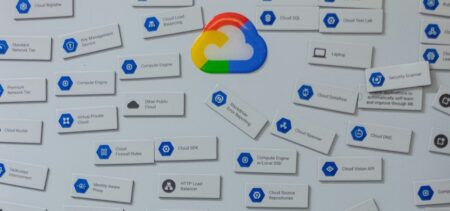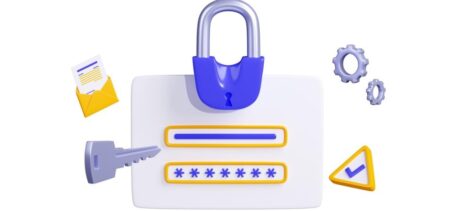A few days ago I read an interesting article on how to write better emails. This inspired me to share some of my experience on the topic. The perfect email-writing technique helped me get high profile jobs, convince others to support activities even when they didn’t have to, motivate teams to overachieve, or even set someone on the right path. Masters of the art of communication have more potential and influence than they know.
Though other communication apps are starting to influence the usage of emails, the electronic mail is still the most used tool worldwide because it’s easy to use, straight forward, and formal (most of the times). We use it to communicate with our team, our boss, our clients, and more. Will it be around until the end of time? Probably not, but as things stand right now, emailing will remain essential for any business at least for the next few years, therefore mastering how to write the perfect email is still valuable.
I will go over the most important steps that will help you write the appropriate email for any scenario.
1. Identify the situation and set an objective.
Arguably the most important and overlooked step is to figure out what’s the situation of the communication. This step will influence the length of your email, writing style, structure, response time, and others. It’s a step that takes place mostly in your own mind, but it’s important nevertheless.
If the situation is urgent, your style will have to be more direct and your response as timely as possible. On the other hand, if you need to encourage an employee, you will have to adjust your style to something inspiring that you know can trigger his motivation – and that can result in an informal content.
In order to have the correct mindset and write a compelling email for any situation, you need to get this step right. Understanding what you need to do from the very beginning will most likely save you time in the writing process as well.
2. Pick a specific and effective title.
One of the first things you learn as a journalist, or as any type of content writer for that matter, is that the title is the most important part of your article. On some level, the same principle applies to emails. If your title is wrong, people might not read your email.
Think of your subject line as an overview of the article. Sometimes it can stand on its own – meaning that the information you need to communicate can fit in a title, and you can use “EOM” (end of message) or other abbreviation that you agreed upon at the end of the headline. The reader knows this way that he doesn’t need to open the email, essentially saving time. In other cases you might need a title that compels the reader to open and read the email.
Examples:
EOM title: Marketing meeting moved today at 3 PM. EOM
Read more title: Market report finalized. Here are the essentials
One of the most important email title rules I try to implement everywhere is the usage of tags at the beginning of the title. This helps shorten the title and I always know what the email is in reference to even if the person sending it doesn’t write perfect titles all the time.
Examples:
[R&R] Employee of the month – July
[Rebranding] Logo proposals
[Recruitment] Final candidates for Junior Copywriter
It might not seem like much, but it makes a big difference. You will be able to prioritize the emails with little effort on your part.
Avoid generic or blank subject lines at all costs. Instead keep your titles short and specific so that the recipient knows what the email is about before opening it.
3. Use an appropriate style for your email content.
If you followed the first step, this one shouldn’t be very difficult. There might be more types of content styles, but in most cases it will come down to a simple choice between two options:
– Formal. Used for about 90% of usual work-related conversations, excepting companies that want to create an informal atmosphere for their employees. The formal style can also be divided in two categories: telegraphic – short and fast responses, usually for urgent situations or for extremely busy recipients that receive a lot of emails, and argumentative – can be longer and you shouldn’t rush to send it until you’ve read it a few times. The argumentative style is used for outputs, feedbacks, and as the name says – things that require argumentation, while the telegraphic type is generally used in everyday email discussions.
– Informal. In a few situations, the informal style is actually preferred to the formal one. Sometimes you need to spark a reaction that would be very difficult to accomplish using a formal style. In the professional context, these situations are mostly related to motivation.
4. Structure your email.
Use an intro, a body, and a conclusion. Structured content is easier to follow, and after all, your goal is for the recipients to read and understand the information you are communicating.
Intro – Greet the recipients accordingly, introduce yourself (if needed), and specify the purpose/contents of the email.
Body – This is where the bulk of your information is. Structure it using the pyramid technique (from most important to least important). Be sure to start new paragraphs when you’re discussing about other topics. Avoid long, over complicated sentences, they are hard to follow.
Conclusion – You don’t need to summarize, unless your email is very long – it shouldn’t be most of the times, instead you should finish with a call to action, recommendations, or a final inspiring word, depending on the contents and the purpose of the email. Don’t forget to add contact details if your signature doesn’t already contain them.
5. Proofread and review the email before sending it.
There’s nothing that says you’re unprofessional like an email full of spelling mistakes. If you have doubts about your writing abilities just keep it in a safe zone. Write simple sentences that you use every day – which you should be doing anyway, and use autocorrect. Always review your email before hitting send/reply.
I generally encourage face to face communication whenever it’s possible, but even when that can happen emails still play an important part of the discussion as a follow-up. The written word eliminates the possibility of someone forgetting whatever you agreed upon. I think some form of emails – even if they evolve into something else, will always be part of business communication simply because the value of the written word can’t be replaced… yet.
















































